Storage Matters: Why Xbox and Playstation SSDs Usher In A New Era of Gaming
by Billy Tallis on June 12, 2020 9:30 AM EST- Posted in
- SSDs
- Storage
- Microsoft
- Sony
- Consoles
- NVMe
- Xbox Series X
- PlayStation 5
What To Expect From Next-gen Games
NVMe SSDs can easily be 50 times faster than hard drives for sequential reads and thousands of times faster for random reads. It stands to reason that game developers should be able to do things differently when they no longer need to target slow hard drives and can rely on fast storage. Workarounds for slow hard drive performance can be discarded, and new ideas and features that would never work on hard drives can be tried out. Microsoft and Sony are in pretty close agreement about what this will mean for the upcoming console generation, and they've touted most of the same benefits for end users.
Most of the game design changes enabled by abandoning hard drives will have little impact on the gaming experience from one second to the next; removing workarounds for slow storage won't do much to help frames per second, but it will remove some other pain points in the overall console experience. For starters, solid state drives can tolerate a high degree of fragmentation with no noticeable performance impact, so game files don't need to be defragmented after updates. Defragmentation is something most PC users no longer need to give even a passing thought, but it's still an occasionally necessary (albeit automatic) maintenance process on current consoles.
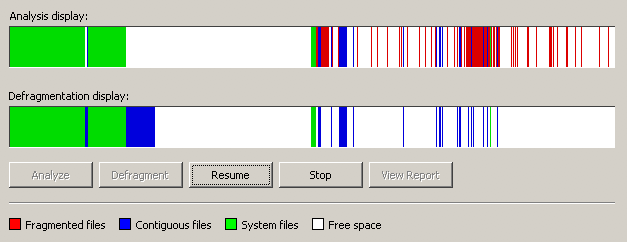
Not as obsolete as you might have thought. But soon.
Since game developers no longer need to care so much about maintaining spatial locality of data on disk, it will also no longer be necessary for data that's reused in several parts of a game to be duplicated on several parts of the disk. Commonly re-used sounds, textures and models will only need to be included once in a game's files. This will have at least a tiny effect on slowing the growth of game install sizes, but it probably won't actually reverse that trend except where a studio has been greatly abusing the copy and paste features in their level editors.
Warnings to not turn off the console while a game is saving first showed up when consoles moved away from cartridges with built-in solid state storage, and those warnings continue to be a hallmark of many console games and half-assed PC ports. The write speeds of SSDs are fast enough that saving a game takes much less time than reaching for a power switch, so ideally those warnings should be reduced, if not gone for good.
But NVMe SSDs have write speeds that go far beyond even that requirement, and that allows changes in how games are saved. Instead of summarizing the player's progress in a file that is mere megabytes, new consoles will have the freedom to dump gigabytes of data to disk. All of the RAM used by a game can be saved to a NVMe SSD in a matter of seconds, like the save state features common to console emulators. If the static assets (textures, sounds, etc.) that are unmodified are excluded from the save file, we're back down to near instant save operations. But now the save file and in-use game assets can be simply read back into RAM to resume the whole game state in no more than a second or two, bypassing all the usual start-up and load work done by games.
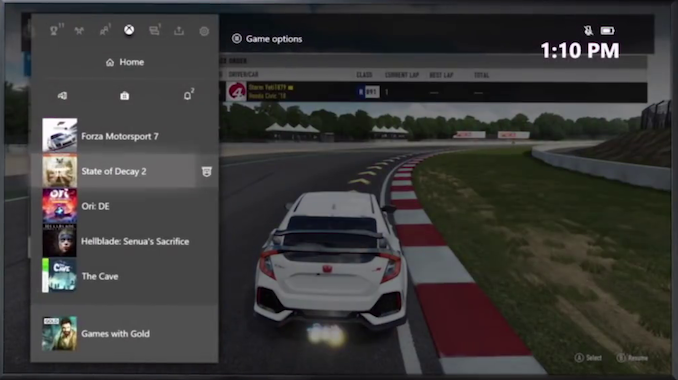
Xbox Series X Quick Resume menu
The deduplication of game assets is a benefit that will trivially carry over to PC ports, and the lack of defragmentation is something PC gamers with SSDs have already been enjoying for years—and neither of those changes requires a cutting edge SSD. The instant save and resume capabilities can work just fine (albeit not quite so "instant") on even a SATA SSD, but implementing this well requires a bit of help from the operating system, so it may be a while before this feature becomes commonplace on PC games. (Desktop operating systems have long supported hibernate and restore of the entire OS image, but doing it per-application is unusual.)
But those are all pretty much convenience features that do not make the core game experience itself any richer. The reduction or elimination of loading screens be a welcome improvement for many games—but many more games have already gone to great lengths to eliminate loading screens as much as possible. This most often takes the form of level design that obscures what would have been a loading screen. The player's movement and field of view are temporarily constrained, drastically reducing the assets that need to stay in RAM and allowing everything else to be swapped out, while retaining some illusion of player freedom. Narrow hallways and canyons, elevator and train rides, and airlocks—frequently one-way trips—are all standard game design elements to make it less obvious where a game world is divided.
Open-world games get by with fewer such design elements by making the world less detailed and restricting player movement speed so that no matter where the player chooses to move, the necessary assets can be streamed into RAM on the fly. With a fast SSD, game designers and players will both have more freedom. But some transition sequences will still be required for major scene changes. The consoles cannot reload the entire contents of RAM from one frame to the next; that will still take several seconds.
SSD As RAM?
Finally, we come to what may be the most significant consequence of making SSDs standard and required for games, but is also the most overstated benefit: Both Microsoft and Sony have made statements along the lines of saying that the SSD can be used almost like RAM. Whatever qualifiers and caveats those statement came with quickly get dropped by fans and even some press. So let's be clear here: the console SSDs are no substitute for RAM. The PS5's SSD can supply data at 5.5 GB/s. The RAM runs at 448 GB/s, *81 times faster*. The consoles have 16 GB of GDDR6 memory. If a game needs to use more than 16 GB to render a scene, framerates will drop down to Myst levels because the SSD is not fast enough. The SSDs are inadequate in both throughput and latency.
It's certainly possible for a level to use more than 16GB of assets, but not all on screen at once. The technical term here is working set: how much memory is really being actively used at once. What the SSD changes somewhat is the threshold for what can be considered active. With a fast SSD, the assets that need to be kept in DRAM aren't much more than what's currently on screen, and the game doesn't need to prefetch very far ahead. Textures for an object in the same room but currently off-screen may be safe to leave on disk until the camera starts moving in that direction, whereas a hard drive based system will probably need to keep assets for the entire room and adjacent rooms in RAM to avoid stuttering. This difference means an SSD-based console (especially with NVMe performance) can free up some VRAM and allow for some higher-resolution assets. It's not a huge change; it's not like the SSD increases effective VRAM size by tens of GBs, but it is very plausible that it allows games to use an extra few GB of RAM for on-screen content rather than prefetching off-screen assets. Mark Cerny has approximated it as saying the game now only needs to pre-fetch about a second ahead, rather than about 30 seconds ahead.
There's another layer to this benefit: partially resident textures has been possible on other platforms, but becomes more powerful now. What was originally developed for multi-acre ground textures can now be effectively used on much smaller objects. Sampler feedback allows the GPU to provide the application with more detailed and accurate information about which portions of a texture are actually being displayed. The game can use that information to only issue SSD read requests for those portions of the file. This can be done with a granularity of 128kB blocks of the (uncompressed) texture, which is small enough to allow for meaningful RAM savings by not loading texels that won't be used, while at the same time still issuing SSD reads that are large enough to be a good fit for SSD performance characteristics.
Microsoft has stated that these capabilities add up to the effect of a 2x or 3x multiplier of RAM capacity and SSD bandwidth. I'm not convinced. Sure, a lot of SSD bandwidth can be saved over short timescales by incrementally loading a scene. But I doubt these features will allow the Series X with its ~10GB of VRAM to handle the kind of detailed scenery you could draw on a PC GPU with 24GB of VRAM. They're welcome to prove me wrong, though.


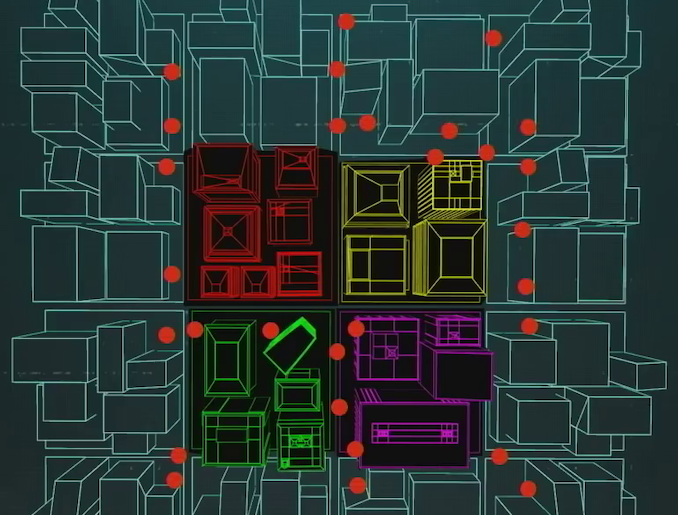
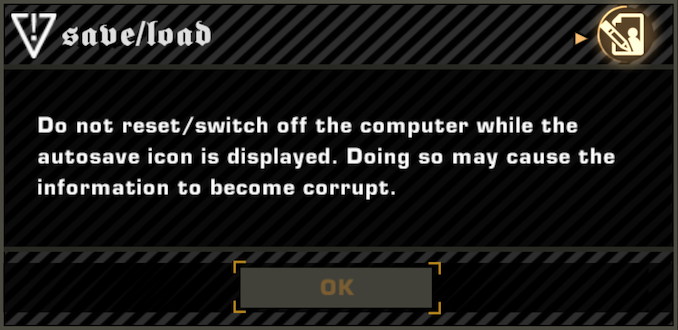
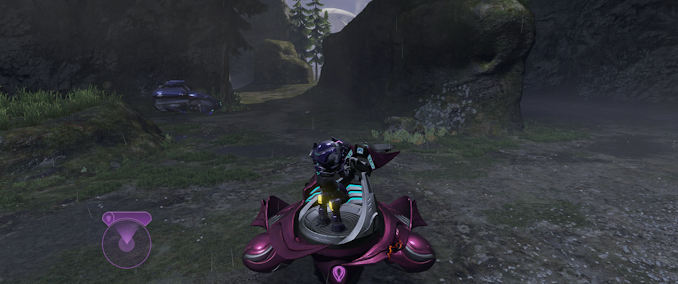










200 Comments
View All Comments
close - Tuesday, June 16, 2020 - link
@imaheadcase, magically gaming is the only segment that was somehow all issues on the PC were ironed out? So every time I update my GPU driver those random issues (performance or otherwise) are imagined? When Spectre patches came in my Nier Automata started bsoding like crazy. AC:Odyssey now constantly freezes 1s every few minutes. Minor nuisances but enough to prefer the occasional dip in FPS on the console.mocseg - Friday, June 12, 2020 - link
This. Turn on, select, play.And that's all.
Kurosaki - Friday, June 12, 2020 - link
Played nier automata on pc lately?Did not think so...
close - Sunday, June 14, 2020 - link
@Kurosaki, I did play it on PC and in January 2018 as soon as I applied the Windows Spectre patch, Nier started BSODing consistently (I still have the memory dumps that I analyzed back then). By the time it was fixed (don't really know when) I mostly lost interest in the game. It's there on my PC, I just already moved on to playing other stuff.I'm not generalizing, it was the only game I have that did this. But it puts the issue in context: there's always one more thing to look out for.
Klimax - Saturday, June 13, 2020 - link
Same on computer...Tams80 - Friday, June 12, 2020 - link
That argument is moot. All three console makers are well aware of "it just works" being important. They don't always get it right, but on the whole they do.It does matter what hardware is inside though, as that determines what games will run and at what settings.
choaniki - Saturday, June 13, 2020 - link
Also no ring0 anti-cheat or anti-copy malware to ruin your gaming experience.Chaser - Sunday, June 14, 2020 - link
I never looked at it that way. Yes if you want the most simplistic guarantee the hardware will match the software you get it with a console. But PC gamers can upgrade memory, GPU even CPU now with AMD Ryzen. As a matter of fact, harder core PC gamers delight on upgrading and then seeing/experiencing those benefits.PeachNCream - Monday, June 15, 2020 - link
The problem is that upgrading is a necessity. While a lot of us tell ourselves that we enjoy it, we spend thousands on new components and invest significant time over the same period for which a single console generation is relevant all in the name of keeping up with current software. Sure its something to do with yourself to fill in time or populate that recreational void in our sad, technology-focused lives. On the other hand, when I buy a console, I don't have to force myself to enjoy buying and swapping out components, downloading new drivers, suffering through an OS update, fretting about whether or not my keyboard has the right switches inside of it and so forth. I buy a game and play it. Three years later, the same box gives me the same results with a new game I buy for it and I don't worry about looking at the system requirements because my hardware implicitly meets said requirements.Spunjji - Monday, June 15, 2020 - link
Most people I know upgrade their PC maybe twice during a console generation, but often not even that.The option is not the same as a requirement. If you don't enjoy it, that's cool, some of us do and that's cool too. This site kinda caters to that latter group, though...